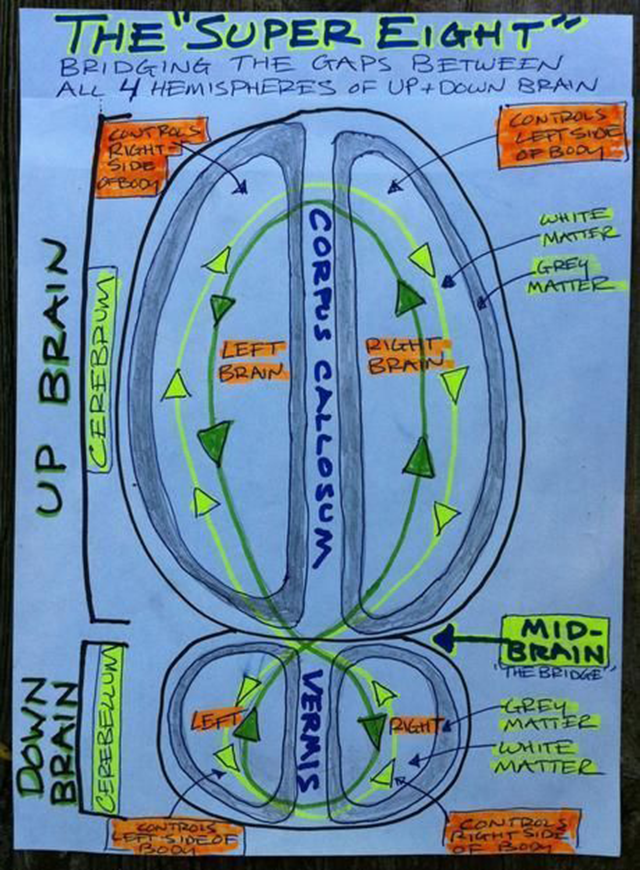Jane Fonda describes peak experiences while discussing the making of 'Youth.'

Source: Georges Biard/Wikimedia Commons
In a recent interview about her upcoming film, Youth, Jane Fonda describes magical peak experiences she's had during the process of filmmaking. The language Fonda uses to describe her most inspired moments as an actress offer valuable clues for better understanding the highest form of “flow,” which I have coined “superfluidity.”
Last week, I wrote a Psychology Today blog post, “Superfluidity” and “Hot Hands” Are Synonymous,” which was inspired by a New Yorker article that examined a period during Bob Dylan’s career when he had a “hot hand,” as represented by a phenomenal streak of creative output during the 1960s.
Fonda's description of "hitting her marks" perfectly, and a mysterious transcendence that occurs when the character she's playing takes the reins, reminds me of language I've used to describe superfluidity – a term I borrowed from the world of physics to visualize the feeling of existing and performing with absolutely zero friction or viscosity.
Superfluidity Is an Ecstatic Experience Beyond Regular Flow
As an athlete, I learned how to create flow in a way that allowed me to “hit my marks” and lose myself in the sweet spot between matching the level of challenge and my skill level on a daily basis. After years of training, creating regular flow became de rigeur, and mundane, for me. I got bored with regular flow.
So, every day during my athletic training, or in a competiion, I was ultimately on a quest for the holy grail of seizing upon ecstatic moments of superfluidity and holding on to them for as long as I possibly could. When one of these flashes occurred, I would say, "YES! This is it!" and immediately deconstruct all of the elements that had created that magical moment, so I could recreate it more easily in the future.
This afternoon, as I was watching an interview with Jane Fonda on YouTube, my jaw dropped when I heard her using new language to describe the same elusive state that I call “superfluidity.” Fonda describes what I call “superfluidity” as “IT."
Just as "flow" and the "zone" are synonymous, "superfluidity" and other words can be used to describe the ecstatic state of transcendence that people have during a peak experience. Fonda describes "IT" as occuring when "preparation meets opportunity"... and some "luck" is mixed into the brew. She also says that oftentimes, when she expects IT to happen, it doesn't, and vice versa.
As you watch this interview, pay attention to the movement of Fonda's eyes and how she speaks with her hands. Based on decades of neuroscientific research, I have a hunch that superfluidity is created when all four brain hemispheres are synchronized and fine-tuned in perfect harmony.
When Fonda recollects the times “IT” happens, her hand gestures imply to me that she's actively engaging both hemispheres of the cerebrum (Latin for "brain") and both hemispheres of the cerebellum (Latin for "little brain"). Watching her hands gesticulate, I imagine that Jane Fonda is engaging all four hemispheres of her brain as a way to viscerally and cerebrally recollect the memories most vividly in her mind's eye and articulate them.
I get goose bumps hearing Fonda describe, in a whispered tone, how part of her conscious mind says, "It's happening" and simultaneously being scared that the muse will disappear, and the feeling will dissolve, if she puts too much of a spotlight on the sacredness of the moment. When I heard her describe this feeling, I said out loud, "Yes, that's a big part of it."
The most mysterious thing about superfluidity is just how slippery and difficult it is to hold on to. As soon as you try to grasp superfluidity consciously, and relish in its bliss, the very lack of friction and viscosity that created the state, allows it to slip from your psychic grasp. Supefluidity is a classic case of, "Hold on loosely, but don't let go."
When I first experienced superfluidity as an athlete, I didn't have words or language to describe the experience. Once I tagged it as superfluidity, it gave me tangible visual images from the world of neuroscience and the world of quantum physics that made this state of consciousness something I could visualize as a tangible destination in my mind.
As I pursued superfluidity religiously day after day, it began to happen more and more frequently... and my athletic abilities grew exponentially. I credit my daily quest for experiencing superfluidity as the key to breaking a Guinness World Record. The main reason I'm on a crusade to identify and promote this experience as the second-tier of flow is because I believe the pursuit of superfluidity is the key to optimizing the absolute full human potential in anything someone pursues wholeheartedly.
Have You Experienced, Witnessed, or Heard Others Describe Superfluidity?
I've had my antennae up for people describing the phenomenon of superfluidity ever since I first read Roger Bannister's description of breaking the four-minute mile. Bannister said, "No longer conscious of my movement, I discovered a new unity with nature. I had found a new source of power and beauty, a source I never dreamt existed.” He is describing superfluidity. Likewise, when artist Paul Klee says, “Everything vanishes around me, and works are born as if out of the void. Ripe, graphic fruits fall off. My hand has become the obedient instrument of a remote will.” This is superfluidity.
On p. 326 of The Athlete's Way: Sweat and the Biology of Bliss, I describe my early research findings and personal experiences with superfluidity,
"The feeling of superfluidity is universal and transferable. In moments of superfluid performance the ego dissolves, or is transformed. Ecstasy comes from the Greek "to stand outside oneself." In moments of superfluidity your ego blends with some outside energy source and you are at one with the other. The power of that union makes you feel like a tour de force. You become one. I can feel the tumblers in my brain shift tectonically as I slip through the pinhole into a state of superfluid performance.
Recently, using fMRI imaging technology, brain researchers have been able to watch the brain switch off "self," or what would be considered the ego. Researchers Rafael Malach and Ilan Goldberg at the Weizmann Institute of Science in Israel found that during sensory tasks that create a state of fluid performance – one in which subjects "lose themselves" in what they are doing – the prefrontal cortex becomes very quiet on the fMRI. During these moments consciousness is shifted from the front of the brain, and the seat of your "self" is moved. My educated guess is that it is shifted into the cerebellum. No one knows for sure.
The researchers above propose, "The picture that emerges from the present results is that, during intense perceptual engagement .... the term "losing yourself" receives a clear neuronal correlation echoing in Eastern philsophies such as Zen teachings, which emphasize the need to enter into a 'mindless,' selfless mental reality." This much is clear – shutting down the amount of neural activity in the prefrontal cortex by being fully engaged in a sensory task appears to faciliate losing yourself in whatever you're doing and you will increase the chance of having a superfluid episode."
Identifying the brain mechanics behind superfluidity is my primary mission. Since publishing the passage above, the focus of my research has evolved to include cognitive flexibility and using research on autism spectrum disorders (ASD) to identify what is occuring in terms of structural and functional connectivity – as well as synchronization – between all four brain hemispheres.
Below is a sketch I drew to illustrate how optimizing the connectivity between the gray and white matter of both cerebral and cerebellar hemispheres might be linked to superfluidity. I apologize for the quality of the sketch, this is still a work in progress.

Source: Illustration and image by Christopher Bergland
Conclusion: Superfluidity and the Timelessness of Awe
Hearing Jane Fonda describe the themes of Youth, and knowing that she's more tapped into her ability to have peak experiences at this stage of life – than she's ever been before – is a powerful reminder that awe-inspired "WOW!" moments are available to us later in life. Superfluidity is not reserved only for people striving for peak experiences during what is traditionally considered the prime of our youth.
